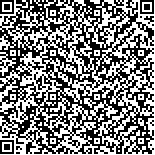本文已被:浏览 1019次 下载 1432次
Received:October 14, 2019 Revised:November 07, 2019
Received:October 14, 2019 Revised:November 07, 2019
中文摘要: 输电铁塔作为架空输电线的重要组成部分,其安全状况将影响整个电力系统的运行,鸟窝的搭建作为影响输电线路正常运行的重要因素之一,需要对此进行监控.而现有的监控手段不仅效率低,还需要耗费大量的人力物力.本文针对这一现象提出一种基于SSD算法的实时检测方法,并在SSD的网络结构基础上将前置网络VGGNet替换为ResNet-101,提高其特征提取能力,并将Softmax loss用Focal loss代替以改善SSD算法中样本不平衡的问题,并利用数据增广提高数据多样性,以提高模型的鲁棒性.实验结果表明本文所提出的方法检测精度对比原SSD算法在准确度和召回率上分别有3.17%和6.35%的提升.
中文关键词: 深度学习 SSD算法 鸟窝检测 ResNet Focal loss
Abstract:As an important part of overhead transmission line, the safety of transmission tower will affect the operation of the whole power system. The construction of bird's nest is one of the important factors affecting the normal operation of transmission line, which needs to be monitored. Nevertheless, the existing monitoring methods not only are inefficient, but also require a lot of manpower and material resources. To cope with this phenomenon, this study puts forward a real-time detection method based on the algorithm of SSD. In addition, lead network VGGNet is replaced by ResNet-101 based on the network structure of SSD, so as to improve their ability of feature extraction. The Focal loss instead of Softmax loss improve SSD sample imbalances in the algorithm. And the data augmentation is used to increase diversity, in order to improve the robustness of the model. Experimental results show that the detection accuracy of the method proposed in this study is improved by 3.17% and 6.35% respectively in terms of accuracy and recall rate compared with the original SSD algorithm.
文章编号: 中图分类号: 文献标志码:
基金项目:国家自然科学基金(61703201);江苏省自然科学基金(BK20170765)
引用文本:
祁婕,焦良葆.改进SSD的输电铁塔鸟窝检测.计算机系统应用,2020,29(5):202-208
QI Jie,JIAO Liang-Bao.Bird Nest Detection on Transmission Tower Based on Improved SSD Algorithm.COMPUTER SYSTEMS APPLICATIONS,2020,29(5):202-208
祁婕,焦良葆.改进SSD的输电铁塔鸟窝检测.计算机系统应用,2020,29(5):202-208
QI Jie,JIAO Liang-Bao.Bird Nest Detection on Transmission Tower Based on Improved SSD Algorithm.COMPUTER SYSTEMS APPLICATIONS,2020,29(5):202-208


